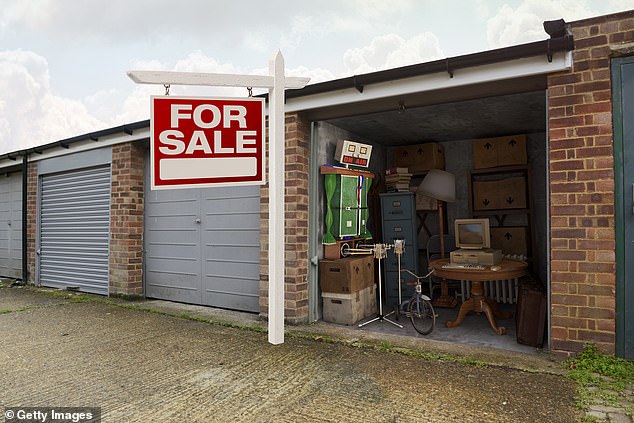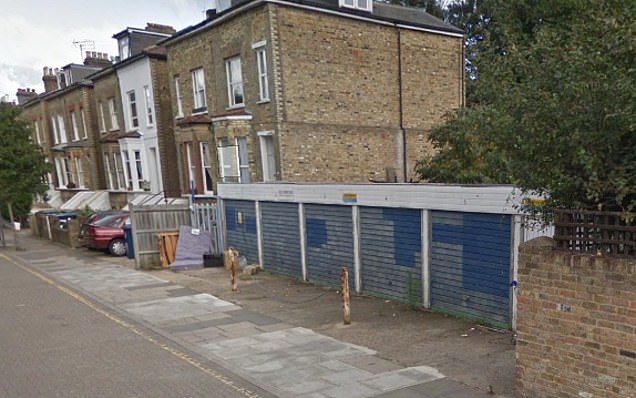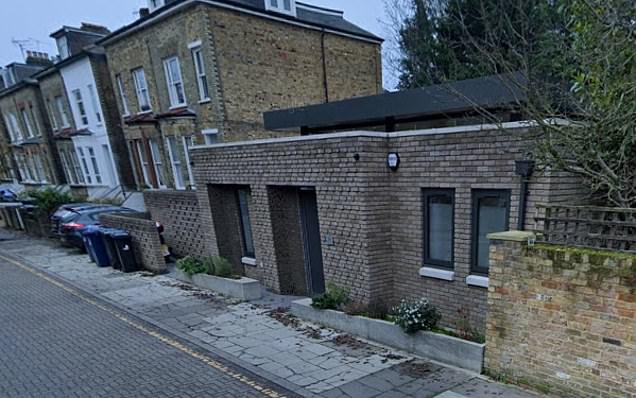There is a row of garages at the end of my street that are mostly use for storage and are a bit of an eyesore.
I have noticed they are for sale in an auction next month. The auction catalogue says that there is ‘potential for residential development, subject to planning permission’.
How likely is it that I would get planning permission for a house?
In general, it is likely that a row of old garages could be replaced with at least one new house, advises planning consultant Martin Gaine
Myra Butterworth, MailOnline Property expert, says: Developing a row of garages can provide an opportunity to build a home.
It is likely that a row of old garages could be replaced with at least one new house.
But you will need to do your due diligence beforehand – we speak to planning expert Martin Gaine about what you need to consider.
Martin Gaine, a chartered town planner, replied: Welcome to the risky but rewarding world of property development.
Buying some land and then getting planning permission for a new house is a great way to add value and make a profit.
You can build the house yourself or sell the land on with the consent without ever doing any work on it.
The risk, of course, is that planning permission might not be granted. If it is not, you would be stuck with the garages as they are, although perhaps you could generate a return by renting them out.
It is impossible to be sure that planning permission would be granted on a site, but it is important to minimize the risk of a refusal.
You can take independent advice from a planning consultant on the feasibility of your proposed development.
The first thing they will check is whether the site has any planning history. Often, when a site is sold at auction, it is because the owner has tried – perhaps several times – to get consent and failed.
If the owner has applied, been refused, appealed that refusal and then lost the appeal, it may be that the site is not suitable for development.
On the other hand, these failures will make the site much cheaper and, if you think that the applications submitted by the owner were weak or flawed, and that you could get permission where he failed, you could be picking up a real bargain.
A planning consultant will be able to tell you whether a new attempt could succeed despite a messy planning history, or whether the previous applications show that it is unlikely that permission will be granted.
The consultant will then consider the site’s planning constraints, including if there are any characteristics that limit the development potential of a site.
If, for example, the site is in a flood zone, it will be much less likely that you could build a house there. If there is a protected tree on the site, you will not be able to build close to it. And if it is in a conservation area, the council will only grant permission if you produce a very high-quality design.

Rows of garages are a hangover from the 1970s, says Mr Gaine, with fewer people go to the trouble of parking their cars in a garage
The next step is to check the council’s planning policies. They set out a range of important criteria, such as the minimum size for new homes, how much garden area they must have and what level of parking is expected.
And finally, a planning consultant will be able to investigate any other obvious limitations.
Garages are usually single-storey and tend to be located close to other houses. It may be, for example, that you can only build a single-storey house – a bungalow -, because a taller building would be more imposing and prominent than the garages and would overshadow a neighbour’s garden.
In general, it is likely that a row of old garages could be replaced with at least one new house.
The Government is keen to support this kind of development – we are in a housing crisis and it is better that homes are built in existing urban areas rather than on green fields.
Rows of garages are a hangover from the 1970s – fewer people go to the trouble of parking their cars in a garage, and many modern cars don’t even fit in older garages.
Property development is daunting, especially if you are embarking on your first project.
It is best to start with something small, and replacing a set of garages with one or two new houses is a relatively common and predictable kind of project, and therefore a good first step. Just make sure to do your homework and get some professional advice.






